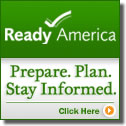Links to Earthquake Safety
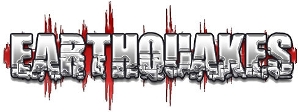
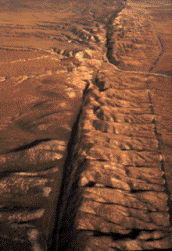
San Andreas Faultline
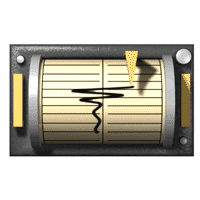
Was that an Earthquake??
Click here to find out
Can Earthquakes Be Predicted?
mayyyybe......
* California "Big One" Somewhat Predictable
* Earthquakes Across the US Somewhat Predictable
Water Storage & Earthquake
Kit Information:

Emergency Water Storage Information
What
Do I Put in an Earthquake Kit ?
A
Word About Kits....
Supplies: A
Checklist
Earthquakes and Fires
In the 1906 San
Francisco 7.8 earthquake, the city burns to the ground -
what
will happen to SoCal when the "Big One" hits?
Wikipedia
Earthquakes
and the Pacific Ring of Fire
About 90% of
the world's earthquakes and 80% of the world's
largest earthquakes
occur along the Ring of Fire
Wikipedia
FREE REALTIME EARTHQUAKE 3D SOFTWARE
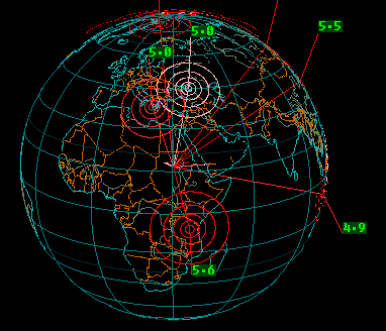
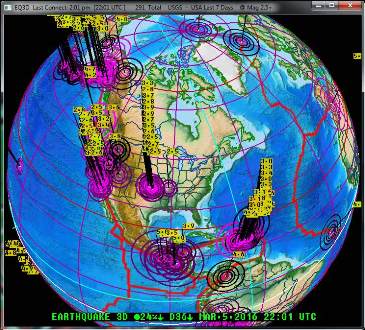
Visit:
http://www.earthquake3d.com/
EQ3D (Earthquake 3D) is a downloadable software of an interactive 3D globe which works on most PC’s and mobile devices. Earthquake3D features live feeds from various seismic agencies shown realtime, visually on a globe - You may have to click the refresh button to see - Click on Apps for free software. The software has been created by Richard Wolton at http://www.wolton.net/
* In the most heavily damaged areas, electricity will remain out for weeks or longer.
* Water will stop flowing in many taps for weeks or months.
* Broken sewer pipes will contaminate broken water pipes, and in some places,
tap water will be unsafe to drink for as long as a year.
* Transportation by road and rail will be disrupted by fault rupture and landslides, and may take months to repair.
* Some hospital buildings will be closed by structural damage; many others will be unusable because of non-structural damage such as broken water pipes and unsecured equipment.
* Two thirds of the region's internet lines will be ruptured by the fault.
Headline: 7/09 Mysterious tremors detected on San Andreas Fault
Scientists have detected a spike in underground rumblings on a section of California's San Andreas Fault that produced a magnitude-7.8 earthquake in 1857.....Read full story @ Foxnews.com>>
San Andreas affected by 2004 Sumatran Quake ScienceDaily (Sep. 30, 2009) — U.S. seismologists have found evidence that the massive 2004 earthquake that triggered killer tsunamis throughout the Indian Ocean weakened at least a portion of California's famed San Andreas Fault....more Science Daily
There have been 70 quakes greater than a magnitude 4.0 so far this year. That's the most of any year in the last decade -- and, it's only April. There were 30 in 2009 and 29 in 2008.
Southern California Earthquake
Center...
is a community of over 600 scientists, students, and
others at over 60 institutions worldwide, headquartered at the
University of Southern California. SCEC is funded by the National
Science Foundation and the U.S. Geological Survey to develop a
comprehensive understanding of earthquakes in Southern California and
elsewhere, and to communicate useful knowledge for reducing earthquake
risk.
Dare to Prepare
Earthquake
professionals, business and community leaders, emergency managers, and
others have joined together to organize Dare to Prepare, an earthquake
readiness campaign to raise earthquake awareness and encourage
earthquake readiness in Southern California. The campaign is supported
with funding from federal, state, and local partners.
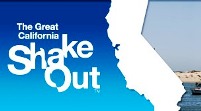
California Shake Out main page
All about the results of the
2008 shake Out
and information on the 2009 Shake Out.

Earthquake Information
Other Emergency Information Links:
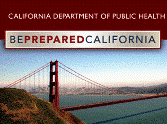
Be Prepared California
Information on emergency
preparations for yourself and family. Information about terrorists
threats, bioterrorism, wildfires, Pandemic flu, and natural disasters
and how to protect yourself.
Tips for children, seniors, and those
with disabilities.
This is a an emergency preparation site from Fema. It contains information on emergency preparedness kits, and emergency preparation for military personnel, seniors, disabled, pet owners and more.
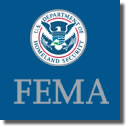
FEMA
Natural and Man-made emergency hazard information and
domestic preparedness.
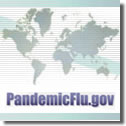
Pandemic Flu.gov
What to do about the flu.
Update and
information on US Government H1N1, Avian, and pandemic flu.
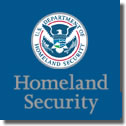
Homeland Security
Broad coverage of emergency
preparedness, response and recovery for families and businesses.
Also
contains information on current terror alert levels, travel safety
warnings at home and abroad, first responder and disaster relief.
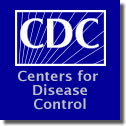
Center for Disease Control
For all your safety and health
concerns. Includes information on Emergency preparedness and response,
Diseases & conditions, Environmental health, Healthy living, Travel
health, Injuries & safety, Workplace safety, and health for different
life stages.
Guide to Extreme Heat
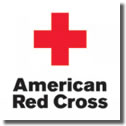
American Red Cross
Emergency Preparation, kit building, and
Disaster Response Information.
Disaster Preparedness for Seniors by Seniors
Quick Emergency Earthquake Guidelines:
Preparing for an earthquake :
- Choose an out-of-town family contact for all family members to call
- Eliminate hazards, including:
- Bolting bookcases, china cabinets, and other tall furniture to wall studs.
- Installing strong latches on cupboards.
- Strapping the water heater to wall studs.
- Take a first aid class from your local Red Cross chapter. Keep your earthquake training current.
- Get training in how to use a fire extinguisher from your local fire department.
- Inform baby sitters and care givers of your plan.
Prepare an emergency disaster kit for home and autos :
- Kits that include;
- Battery-powered radio, flashlight, and plenty of extra batteries
- At least three gallons of water per person, preferably more
- Canned food and can opener
- First aid kit
- Essential medications
- Tools and instructions to shut off utilities
- Sturdy shoes and work gloves, blankets
- Sanitation supplies
- Fire extinguisher
- Keep a pair of shoes and a flashlight by
tour bedside
During an earthquake if you are:
- Indoors:
- Take cover under a desk, table or bench; or against an inside wall or doorway.
- Stay away windows, outside doors and walls and anything that could fall on you.
- If you're sleeping, stay in bed and cover your head with a pillow. If your bed is under a heavy light fixture or you have a large mirror or painting over your headboard, move to the nearest safe place.
- Stay inside until the shaking stops. Most injuries during an earthquake occur when people enter or exit a structure.
- Be aware that the electricity may go out or sprinkler systems and alarms may go off.
- Do not use elevators.
- Outdoors:
- Stay there and move away from buildings, streetlights, and overhead utility wires.
- In a moving
vehicle:
- Keep earthquake survival kits in your car.
- Stop quickly but safely and stay in the vehicle. Don't stop near or under buildings, trees, overpasses or overhead utility wires.
- Proceed carefully once the shaking has stopped and keep an eye out for road damage and obstructions.
- Trapped under debris:
- Do not light a match for light.
- Do not move about or kick up dust.
- Cover your mouth and nose with a handkerchief or clothing to keep dust out.
- Tap on a pipe or wall so rescuers can locate you. Use a whistle or shout for help. Use three taps or whistles followed by a pause until rescuers find you.
What to do after the shaking stops:
- Check yourself and others for injuries and protect yourself from further injuries, using shoes, gloves etc.
- Be ready to give first aid for any injuries
- Extinguish any small fires and try to eliminate any further hazards.
- Shut off gas at meter if you smell gas - only a professional will be able to turn it back on.
- Listen to an emergency radio for instructions
- Prepare for aftershocks
- Inspect for damage to home and get out if it seems unsafe
- Use the telephone only for life threatening emergencies
- Develop an earthquake safety action plan for your family identifying places that can provide the highest amount of protection during an earthquake as well as an escape route and off-premises meeting place.
- Become familiar with your community's disaster preparedness plan.
- Create a disaster plan for your pets so no family member will jeopardize his or her safety to protect animals.
- Teach family members how to shut off water, gas and electricity to the house, or where possible, have an automatic gas shut-off device installed to reduce the risk of fire occurring after the earthquake.
- Purchase at least one multi-purpose dry chemical fire extinguisher.
- Install smoke detectors and change the batteries every six months.
- Prepare an emergency supplies kit including a three-day supply of bottled water and non-perishable food, as well as a manual can opener, paper plates, cups, utensils, first-aid kit, flashlight and battery-operated radio with extra batteries.
- Retrofit your home's structure to better withstand the forces of an earthquake. This is a job for a professional architect, engineer or building contractor.
- Retrofit nonstructural areas of your home to protect your personal property.
- Attach cabinets and bookcases to the wall using brackets.
- Secure heavy objects (e.g. television, stereos, computers, armoires) with brackets or safety straps.
- Secure picture frames, bulletin boards and mirrors to walls using closed-eye screws anchored into wall studs.
- Secure ceiling lights to supports using safety cables.
- Apply safety film to windows and glass doors.
- Anchor large appliances (e.g. refrigerator, stove) to walls using safety cables or straps.
- Install flexible gas lines and automatic gas shutoff valves.
- Tack down glassware, heirlooms and figurines with putty.
- Install latches on kitchen cabinet doors to prevent items from falling.
- Review your insurance policies to assure that you have adequate coverage.



